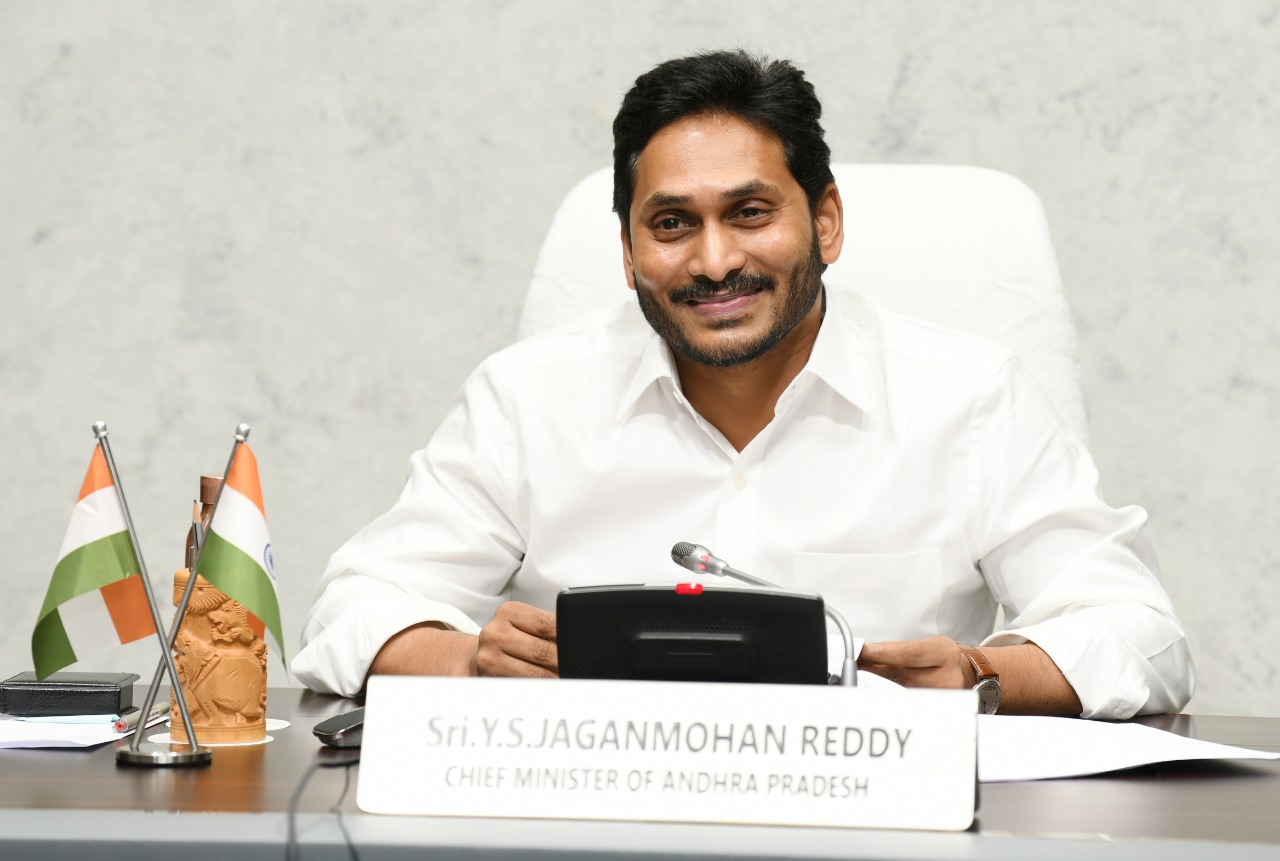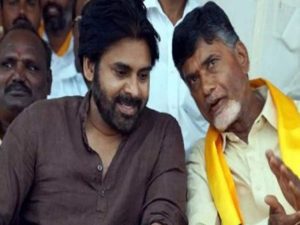
2024 AP polls: Jagan woos OBCs to counter TDP’s Kamma-Kapu caste coalition
If Chandrababu Naidu’s TDP firms up its coalition with Kammas and Kapus, CM and YSR Congress chief Jagan Mohan Reddy is likely to build a rival front with Reddys and OBCs in a bid to retain power

Ahead of the 2024 Andhra Pradesh Assembly elections, Chief Minister Jagan Mohan Reddy is preparing the ground to play the Mandal card to counter the Kamma-Kapu caste coalition bid by his rival and Telugu Desam Party (TDP) chief Chandrababu Naidu. Jagan and his party Yuvajana Sramika Rythu Congress (YSR Congress) are determined to retain power through the electoral mobilisation of the predominant OBCs in the state.
On October 18, Pawan Kalyan of the Jana Sena Party, a caste icon of the Kapus and a Tollywood hero, met Naidu in Vijayawada for the first time in nearly five years, signalling an election-eve social engineering with Kammas (Naidu’s community) and Kapus. Naidu has been keen to align with Kalyan in order to make this alliance a formidable winning combination, cashing in on the actor’s growing popularity among his community, which is numerically dominant in four coastal districts.
Also read: Jagan’s Mission 175 leaves Chandrababu struggling to save Kuppam turf
A week after the Kalyan-Naidu meeting, the YSR Congress convened a convention of OBCs at the Chief Minister’s residence at Tadepalli on October 26, setting the stage for the combination of Reddys and OBCs with Mandal politics as a focal point.
The caste fault lines
During his previous tenure as Chief Minister, Naidu made an abortive bid to accord OBC status to the Kapus. In fact, it was a promise made by the Congress government, led by Kotla Vijayabhaskar Reddy, at an election rally in 1994 in Eluru. But it turned out to be Naidu’s Achilles’ heel. His promise of OBC status to Kapus caused heartburn among the OBCs, hitting Naidu’s electoral prospects in 2019. For a variety of reasons, Kapus and the OBCs are traditional rivals, mainly in East and West Godavari districts. The issue of OBC status for Kapus further widened the gulf between the two social groups.

Jagan successfully capitalised on the Kapus-OBCs divide triggered by the quota move and registered a landslide victory with the backing of the OBCs. The OBCs, constituting nearly 50 per cent of the state’s populace, had been the backbone of the TDP since its heydays under the leadership of NT Rama Rao.
Also read: Jagan’s Mission 175 leaves Chandrababu struggling to save Kuppam turf
NTR’s decision to abolish Patwaris (karanam, or village accountant) in revenue administration had liberated the OBCs from the clutches of village chieftains and the OBC communities had subsequently started rallying behind NTR’s party.
To the advantage of Jagan, Naidu’s attempts at teaming up with Kalyan have apparently reopened the wounds of the OBCs inflicted by his quota-for-Kapus move. If the TDP firms up its coalition with Kammas and Kapus, Jagan is quite likely to build a rival combination with Reddys and OBCs. While Naidu hopes to bank on Kapus, decisive in around 40 out of 69 Assembly segments in four (old) districts of West and East Godavari, Krishna and Guntur, the ruling party seeks to benefit from the OBCs dominant across the state.
Mandal politics at play
At the convention of the OBCs, V Vijayasai Reddy, the YSR Congress Parliamentary Party leader, promised to take up the two demands of the OBCs with the NDA government at the Centre — the creation of a ministry exclusively for the OBC communities in the Union government, and the allotment of quota in the legislative bodies in proportion to their population. The ministry for the OBCs is the 38th out of 40 recommendations of the Mandal Commission, pending implementation by the Union government.
Also read: Why neighbour Andhra may throw a spanner in KCR’s national dreams
The two recommendations pending implementation — ever since the Mandal Commission recommendations were approved by the VP Singh government at the Centre in August 1990 — are 27 per cent quota for the OBCs and the constitution of the National Commission for them. The Mandal Commission was constituted in 1979 and it took a decade for the recommendations to be approved.
The OBC politics in the undivided Andhra Pradesh, however, goes a longer way back than the year when the Mandal report was accepted. With the OBC leaders lobbying with the powers-that-be for quota in the legislative bodies, NTR, as Chief Minister of the TDP government in the mid-1980s, sought to introduce 33 per cent reservation for the backward classes in local bodies. However, the proposal kept gathering dust till Kotla Vijayabhaskar Reddy, the Chief Minister of the Congress government, took it to its logical end in 1995.
Also read: For 2024 AP poll, Jagan looking to project father YSR as trump card
For NTR, pleasing the OBCs became imperative after the killing of Congress lawmaker and Kapus’ icon Vangaveeti Mohana Ranga Rao in Vijayawada, in which the NTR’s party was suspected to be involved. Angirekula Vara Prasad, national president of the OBCs Association, told The Federal that the association in Andhra Pradesh has decided to back Jagan’s party after its promise to defend the cause of the OBCs, besides ensuring a fair deal to the OBCs in the distribution of tickets for the Assembly and Parliament elections.
Jagan’s outreach has doles for OBCs
Janga Krishna Murthy, leader of the YSR Congress OBC cell, said the party’s OBC wing has decided to take Jagan government’s welfare measures for the OBCs to the people. As a move to wean away the OBCs from the TDP fold, Jagan has wooed the TDP’s former lawmaker from Telangana and prominent OBC leader R Krishnaiah into his party with a Rajya Sabha seat.
Watch | News Sense: India’s love-hate relationship with English education
Besides, the Jagan government has given nine out of 26 cabinet berths to the OBCs and made one of them, Budi Mutyala Naidu, the Deputy Chief Minister. Furthermore, 40 per cent of the YSR Congress’ 151 MLAs are OBCs. “We will use these proactive initiatives of our government as a tool for the mobilisation of the OBCs in our party’s favour,” said Krishna Murthy.
Citing the “plight” of Krishnaiah during his association with the TDP, the YSR Congress is planning to depict Naidu as untrustworthy for the OBCs. Krishnaiah was elected to the Assembly on a TDP ticket in 2004. But he was denied the ticket in 2009 as his seat went to the Congress in the seat-sharing with the TDP. His displacement forced Krishnaiah to defect to the Congress and finally to the YSR Congress.
Jagan’s OBC card, aimed against Kapus, is unlikely to work in Konaseema district — renamed Dr BR Ambedkar district — and the adjacent old Godavari districts, according to D Venkateswara Rao, who teaches Political Science at a degree college run by the Chamber of Commerce and Industry at Palacol. Jagan government’s bias in favour of the Dalits may force Kapus and the OBCs to bury the hatchet and get together to hold their sway; that is exactly how it happened in Amalapuram recently, which resulted in violent anti-Dalit protests, he said.
Keeping the OBCs, with 138 divergent sub-castes, united in order to make it a mighty power house in the electoral battle is not that easy, said a retired government officer in Amalapuram, who belongs to the OBCs. Who will have the last laugh in the tug of war involving frenzied formations along caste lines during the Assembly elections — Jagan Reddy or Naidu? Only time will tell.


